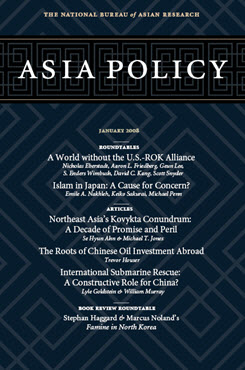International Submarine Rescue
A Constructive Role for China?
This article highlights the opportunity available for the Chinese navy to participate in international efforts to improve and coordinate cooperation in the rescue of disabled submarines.
EXECUTIVE SUMMARY
MAIN FINDINGS
- Submarine accidents that leave vessels disabled and crews trapped underwater are a common risk facing all navies with submarine fleets. International cooperation on rescue efforts is often necessary to ensure that the equipment and personnel necessary for a successful rescue are able to reach a disabled submarine in time to rescue its crew.
- China’s submarine rescue capabilities are modest, especially relative to the country’s increasingly modern submarine force, and the PLA Navy now recognizes the need to increase modernization efforts in this area.
- Many nations now regularly practice multilateral rescue exercises and coordinate their capabilities through the International Submarine Escape and Rescue Liaison Office (ISMERLO). Though a member of ISMERLO, China could become much more active in this organization by taking several steps to increase and improve participation in international rescue cooperative mechanisms.
POLICY IMPLICATIONS
The institutionalized contacts and increased transparency engendered by such cooperation in submarine rescue would fit with broader trends toward increasing openness and participation in international organizations by the Chinese military and could constitute an important confidence-building mechanism between China and the region.
About Asia Policy
Asia Policy is a peer-reviewed scholarly journal presenting policy-relevant academic research on the Asia-Pacific that draws clear and concise conclusions useful to today’s policymakers. Asia Policy is published quarterly in January, April, July, and October and accepts submissions on a rolling basis. Learn more


